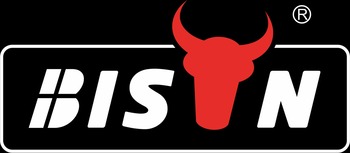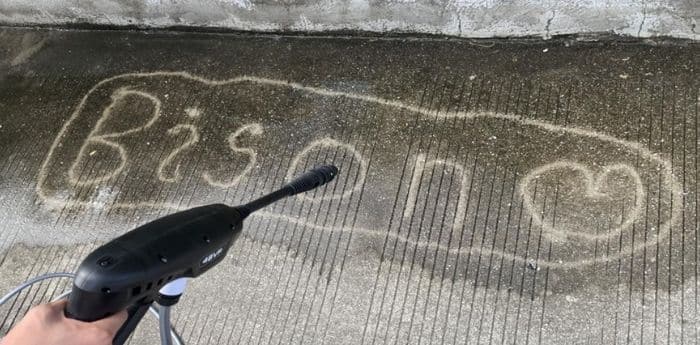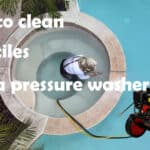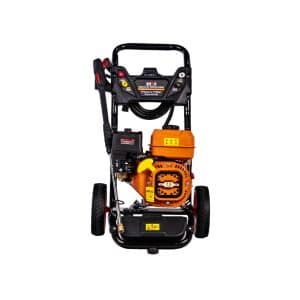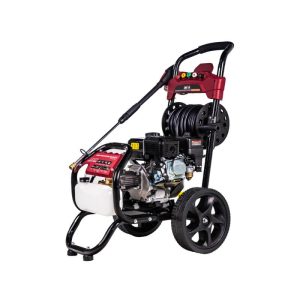
BISON Santy
Hello, I am Santy, the funder of bisonclean.com. I have been in cleaning machinery field for more than 5 years now, and the purpose of this article is to share with you the knowledge related to pressure washer from a Chinese supplier's perspective.
Table of Contents
A pressure washer hose is an essential component for keeping surfaces around your home, from your driveway to your outdoor furniture, clean and restored. It effectively delivers high-pressure water to remove dirt, grime, and debris. Unfortunately, a damaged or malfunctioning pressure washer hose can lead to reduced performance, damage to the machine, and even create safety hazards during use.
But if your pressure washer hose has leaks, cracks, kinks and blockages, don’t worry, let BISON help you! This article will take you through the process of repairing your pressure washer hose, ensuring your pressure washer hose is operating at optimal efficiency.
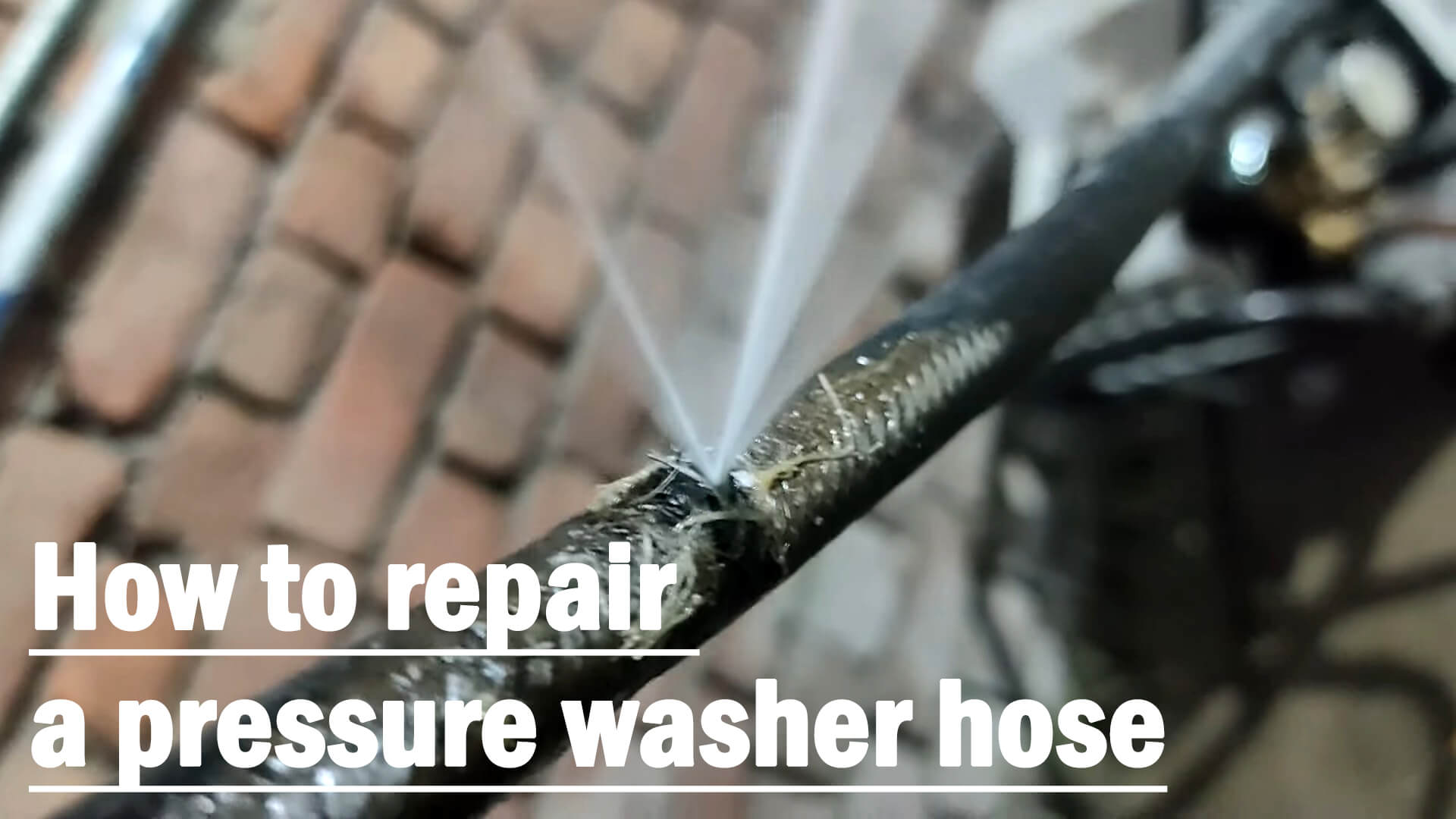
Identifying common pressure washer hose problems
To effectively troubleshoot pressure washer hose problems, it is important to understand these types and signs of damage. Common types are:
- Leaks and drips: One of the most common problems with pressure washer hoses, is noticeable leaks in hoses, which can indicate cracks or weak spots. This usually manifests as water pooling around connection points or dragging behind the hose during use. Severe leaks can cause a decrease in water pressure or a complete loss of water flow.
- Cracks and wear: Visual inspection may reveal visible cracks or frayed edges on the hose. This deterioration can occur due to prolonged exposure to harsh elements or regular wear and tear.
- Kinks and bends: Kinks can restrict water flow and cause pressure to build up. This reduces the efficiency of your pressure washer over time and can also cause permanent damage.
- Clog: If you use your pressure washer to clean surfaces with debris or dirty water, the hose may become clogged. Ice can also severely affect water flow and the overall performance of your pressure washer. These are often accompanied by a loss of pressure or performance.
- Unusual sounds: Listen for unusual noises during operation, such as hissing or sputtering, which may indicate a leak or blockage in the hose.
If you are already familiar with the above examples, let’s move on to the steps to repair the pressure washer hose!
Tools and materials preparation before repair
Before you troubleshoot a pressure washer hose problem, prepare these 3 items to ensure a smooth, efficient repair process:
- Safety equipment: Gloves, goggles, knee pads.
- List of necessary tools: Cutter, Rags, screwdriver, wrench, pliers, tape measure, hose clamps, owner’s manual.
- Hose repair kits: Include a variety of fittings, connectors, seals, and adaptors that professionally repair leaks or cracks.
- New hose: Prepare for situations where hose damage is severe.
Step-by-step repair steps for the pressure washer hose
#Step 1: prepare the work area
First, unplug the pressure washer from power, and water, and disconnect the garden hose from the pressure washer. This ensures safety during the repair process.
Then, find a flat, stable, well-ventilated space and clear the area of any debris or debris. This will ensure there are no tripping hazards and also reduce the hazards of bonding materials.
#Step 2: remove the hose
Remove the hose: Locate the fittings on both ends of the hose connected to the pressure washer and use a wrench to separate it from the pressure washer gun and unscrew it from the pressure washer. Store the fittings in a safe place.
Check for damage: After removing the hose, thoroughly inspect the hose and connections for any significant damage, such as cracks or wear. Check the fittings to make sure they are not bent or corroded, and mark leaks with a pen or tape for quick identification.
#Step 3: repair the hose
Minor leaks: Start by cleaning dirt and debris around the leak with a rag. If the damage is minor (minor punctures or cracks), simply wrap the hose repair tape tightly around the damaged section to ensure an even seal. Alternatively, use a hose connector designed for minor repairs. If the leak is near a fitting, you will need to replace the O-ring or tighten the fitting to create a secure seal.
Severe damage: You will need to measure and mark the section of the hose that needs to be cut, then use a cutter to cut the hose cleanly (straight cut). Take the appropriate connectors from the repair kit and connect them to both ends of the cut hose and secure them with hose clamps. If the leak is near a fitting, you may need to remove the fitting before trimming the pressure washer hose.
Severe damage to the hose that cannot be repaired: You should replace the hose with a new one, being careful to select a hose that meets the specifications required for your pressure washer model. The length of the damaged hose can be measured with a tape measure to determine the required size.
#Step 4: reassembly and testing
Whenever the pressure washer hose is repaired or replaced, the system must be properly reassembled and fully tested. Connect both ends of the hose to the pressure washer and pressure washer gun correctly, and tighten the fittings carefully (do not overtighten). Visually inspect the pressure washer hose again to confirm that there are no kinks, twists, or bends. Run the pressure washer and test the connection for leaks or water flow issues.

Check the pressure washer hose regularly for signs of wear
Preventive maintenance tips
BISON recommend checking your hose for damage before each use and a more thorough inspection monthly.
- Visual inspection: Check the hose regularly for changes in cracks, wear, or bulges. Pay special attention to the area near the fittings.
- Flexibility test: Gently bend the hose to check for changes in hardness or flexibility. Hoses that become stiff or inflexible need to be considered for replacement.
Proper storage techniques
- Coiling the hose: After use, always reel the hose loosely, including keeping it clean to prevent kinks. Consider using a hose reel or hanger to keep the hose organized and off the ground.
- Avoid extreme weather: Store the hose in a shaded area or inside a shed/garage to protect it from extreme temperatures, direct sunlight, and moisture, all of which can degrade the material over time.
- Keep away from pests: There is a possibility that rodents or insects could chew or damage the hose.
Proper use technique
- When using the pressure washer hose, lay it flat and avoid dragging it over sharp edges or obstacles that could create kinks. Consider using a hose guide or roller.
- Before connecting the pressure washer hose, check for any debris or obstructions.
- Keep in mind the limitations of the hose and adjust the water pressure of the pressure washer to a reasonable range.
- Choosing the right nozzle for the pressure washer prevents the hose from being subjected to unnecessary pressure.
- After each use, rinse the pressure washer hose with clean water to remove any soap or chemical residue.
- Consider placing the pressure washer close to the cleaning area to reduce the required hose length.
Conclusion
A properly functioning pressure washer hose is essential for safe and efficient cleaning. By understanding common problems and knowing how to repair a pressure washer hose, you can extend the life of your equipment and also improve its performance. Whether you have a minor leak, a kink, or more serious damage, you can follow the steps in this article to fix it. BSION encourages you to commit to these maintenance practices to extend the life of your pressure washer.
If you are a dealer looking for a pressure washer hose, contact BISON to get our product brochure. BISON pressure washer suppliers are committed to providing high-quality, high-performance products, and we have multiple compliant factories to ensure that all products meet market requirements. Throughout the process, you can enjoy BISON experts providing exclusive customer service for dealers, whether it is customization or technical support, BISON looks forward to your visit!
FAQs about repair a pressure washer hose
The steel braided hose is very durable and suitable for heavy-duty applications. If you have demanding cleaning work needs, you can choose it. It should be noted that BISON has Steel braided dual layer kink resistant pressure washer hose, single layer high tensile wire braided pressure washer hose, dual layer high tensile wire braided pressure washer hose, you can check the detailed product introduction and choose the appropriate steel braided pressure washer hose.
You might also enjoy
Questions?
Contact Us Today.
Related Products
Find more?
Related Posts

How to connect hose to pressure washer
It is crucial to understand the correct way to connect the hose to the pressure washer. In this guide, BISON will teach you on each
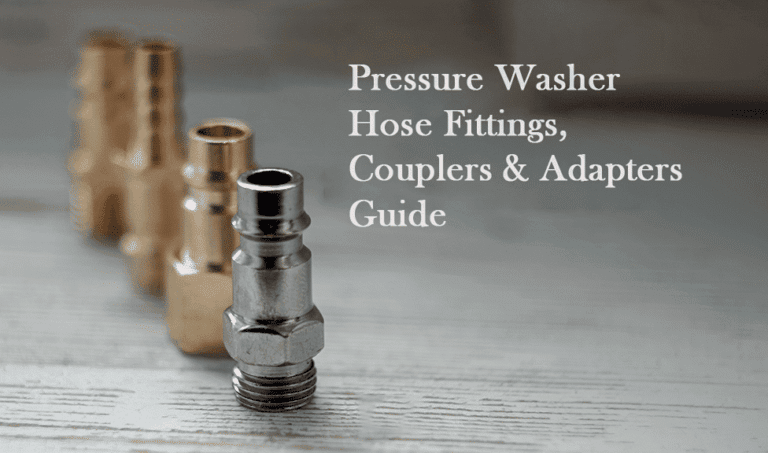
Pressure Washer Hose Fittings, Couplers and Adapters Guide
This guide will teach you everything about pressure washer hose fittings, couplers, and adapters.And how to choose the right pressure washer attachment for your setup.
